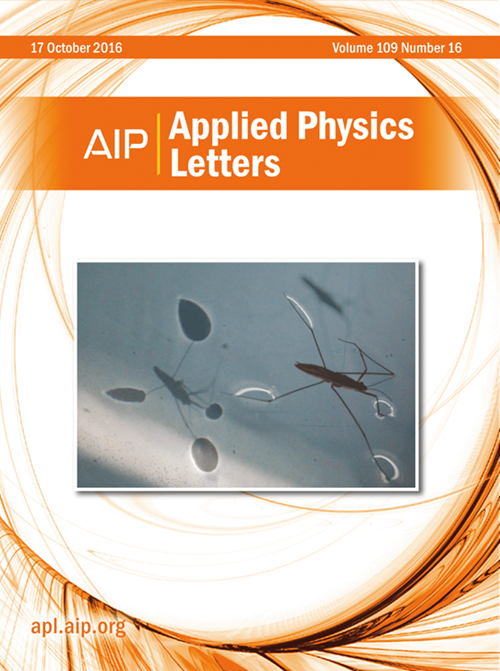Flexible thermal interface materials based on diamond–graphene composite films prepared at different temperatures
IF 3.5
2区 物理与天体物理
Q2 PHYSICS, APPLIED
引用次数: 0
Abstract
Diamond and graphene, which have extremely high thermal conductivity, are considered ideal candidates for the preparation of high-performance thermal interface materials (TIMs). However, the development of flexible TIMs with efficient heat transfer paths still hampers their thermal management applications. Herein, a highly oriented diamond–graphene composite film (DGCF) was prepared by one-step microwave plasma chemical vapor deposition on carbon cloth (CC) using N-butylamine as a single liquid carbon source. The hybridized composition of sp3/sp2 and the heat transfer path length of DGCF are regulated by the deposition temperature and the thermal conductivity of CC/DGCF at 30 °C is 2.71 W m−1 K−1, which is 15 times higher than that of CC. Further flexible TIMs of CC/DGCF are achieved using thermal silicone grease (TG) as filler, and the thermal conductivity of the final flexible compound of CC/DGCF/TG is 6.97 W m−1 K−1 at 30 °C, which is 39 times higher than that of pure CC and 2 times higher than that of TG, respectively. In the actual TIMs performance test, the cooling efficiency is 1.4 times higher than that of the commercial thermal conductive silicone pad. Furthermore, finite element simulations demonstrated that the film at 800 °C has the optimal sp3/sp2 ratio for thermal response and the best thermal conductivity path structure. This finding provides a method for the design of highly flexible TIMs and increases the possibility of their practical application in electronic thermal management.求助全文
约1分钟内获得全文
求助全文
来源期刊

Applied Physics Letters
物理-物理:应用
CiteScore
6.40
自引率
10.00%
发文量
1821
审稿时长
1.6 months
期刊介绍:
Applied Physics Letters (APL) features concise, up-to-date reports on significant new findings in applied physics. Emphasizing rapid dissemination of key data and new physical insights, APL offers prompt publication of new experimental and theoretical papers reporting applications of physics phenomena to all branches of science, engineering, and modern technology.
In addition to regular articles, the journal also publishes invited Fast Track, Perspectives, and in-depth Editorials which report on cutting-edge areas in applied physics.
APL Perspectives are forward-looking invited letters which highlight recent developments or discoveries. Emphasis is placed on very recent developments, potentially disruptive technologies, open questions and possible solutions. They also include a mini-roadmap detailing where the community should direct efforts in order for the phenomena to be viable for application and the challenges associated with meeting that performance threshold. Perspectives are characterized by personal viewpoints and opinions of recognized experts in the field.
Fast Track articles are invited original research articles that report results that are particularly novel and important or provide a significant advancement in an emerging field. Because of the urgency and scientific importance of the work, the peer review process is accelerated. If, during the review process, it becomes apparent that the paper does not meet the Fast Track criterion, it is returned to a normal track.
 求助内容:
求助内容: 应助结果提醒方式:
应助结果提醒方式:


